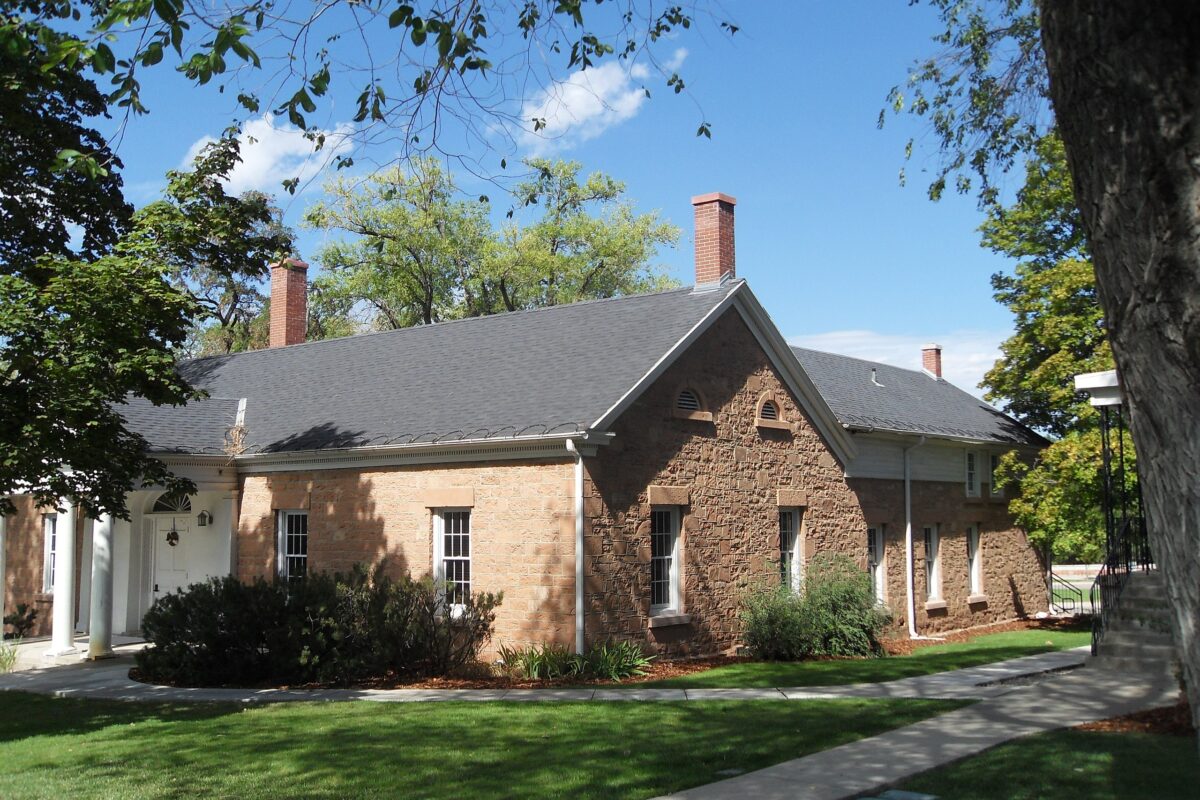Perched on the east bench of Salt Lake City, Fort Douglas is a fascinating mix of military precision, frontier ruggedness, and—if you believe the stories—a touch of the supernatural. Whether you’re a history enthusiast, a weekend traveler, or a seasoned ghost hunter, Fort Douglas offers an unforgettable glimpse into the past with a whisper of otherworldly intrigue. Nestled in the University of Utah campus, this historic site is more than just old buildings and forgotten relics. It’s a place with stories that reach back to the Civil War… and perhaps beyond the veil. Pack your camera, bring your EMF detector, and let’s explore the haunted history of Fort Douglas.
The History
Founded During the Civil War
Fort Douglas was established in 1862, during one of the most divisive times in American history—the Civil War. Although Utah Territory was far from the battlefields, President Abraham Lincoln authorized the creation of a military post near Salt Lake City to assert federal presence, protect overland mail routes, and monitor the local Mormon population’s loyalty to the Union. Originally named Camp Douglas, the fort was built by soldiers from the 3rd California Volunteer Infantry under the command of Colonel Patrick E. Connor.
Perched on a ridge overlooking the Salt Lake Valley, the location was strategic—both in terms of defense and surveillance. Connor, known for his no-nonsense attitude, made it clear the fort’s purpose was to keep an eye on the Church of Jesus Christ of Latter-day Saints. Tensions were always under the surface, but the soldiers’ presence maintained a commodified peace for decades.
Transition to a Permanent Military Post
Following the Civil War, Camp Douglas was renamed Fort Douglas and became a permanent Army installation. Over the years, it played various roles in American military history. It served as a supply post during the Indian Wars, helped manage regional conflicts, and even sent troops to fight in the Spanish-American War. The garrison was expanded and modernized several times, reflecting the nation’s growing military ambitions.
Fort Douglas also served as a crucial training and induction center during both World Wars. During World War I, it was briefly used to hold German POWs. In World War II, it became a command center for military logistics in the western United States and again hosted POWs—mostly Germans and Italians. Stories still persist about interactions between the soldiers and prisoners during these tense times.
Decommissioning and Historic Preservation
After World War II, military operations at Fort Douglas gradually scaled back, and parts of the land were integrated into the University of Utah. In 1991, the U.S. Army officially decommissioned the fort as an active military installation. However, it wasn’t abandoned. Instead, Fort Douglas transitioned into a site of historic preservation, education, and light use by military reserve units.
Today, many of its historic buildings—including officers’ quarters, stone barracks, and the old chapel—still stand. The Fort Douglas Military Museum offers a detailed look at over a century of military history, telling the stories of the soldiers who served here. But as solid as the history is, visitors often report that this post isn’t entirely at peace.
The Haunt
Ghost Stories and Paranormal Activity
With over 160 years of military service and thousands of soldiers who lived, trained, and in some cases died here, it’s no wonder that Fort Douglas has become a magnet for paranormal investigators. Multiple reports of ghostly sightings, disembodied voices, and unexplained cold spots have earned Fort Douglas its haunted reputation.
The Lady in White
One of the most enduring legends is that of the “Lady in White.” Visitors and staff have told tales of a ghostly woman dressed in white, seen wandering near the old chapel and officer quarters. Some believe she may have been the wife or lover of a soldier stationed at the fort who died tragically, either from illness or by taking her own life. Reports include her ethereal figure appearing late at night, sometimes glowing faintly in the moonlight, or vanishing when approached.
Spectral Soldiers
Another commonly reported phenomenon involves spectral soldiers in period uniforms. These apparitions have been seen patrolling the old barracks and parade grounds. Paranormal groups using EMF readers and infrared cameras have documented strange anomalies—sudden drops in temperature, unexplained shadows, and in some cases, faint whispers or footsteps echoing in empty corridors.
The Ghost of the POW
During World War II, Fort Douglas had a functioning prisoner-of-war camp. Some believe one of these detainees met a violent or unjust end, and now his spirit refuses to move on. Paranormal investigations near the former POW barracks have reported unsettling activity, such as locked doors unlocking on their own, voices speaking in German, and a heavy feeling of malevolence in specific rooms.
Fort Douglas Military Museum – A Paranormal Hotspot
The museum itself is thought to be one of the most haunted spots on the fort grounds. Staff have reported alarms tripping with no known cause, furniture shifting overnight, and lights flickering mysteriously. One former curator claimed that he frequently saw shadowy figures move through the museum after hours—figures that vanished when investigated.
Ghost tours occasionally lead visitors through the fort’s spookiest sites, particularly around Halloween. These tours often include access to buildings not normally open to the public, giving ghost hunters firsthand experiences with the fort’s eerie occupants.
Conclusion: A Dream Destination for Ghost Hunters
If you’re a paranormal investigator, history buff, or weekend ghost hunter, there’s no doubt—Fort Douglas should be on your list. The combination of rich military history and strong, consistent paranormal claims creates the perfect setting for those seeking both knowledge and thrills. Whether you’re documenting the past or chasing shadows through stone barracks and forgotten cells, Fort Douglas doesn’t disappoint.
Bring your equipment, keep your senses sharp, and remember—at Fort Douglas, you’re never really alone. The echoes of history may just be whispers from the other side.

